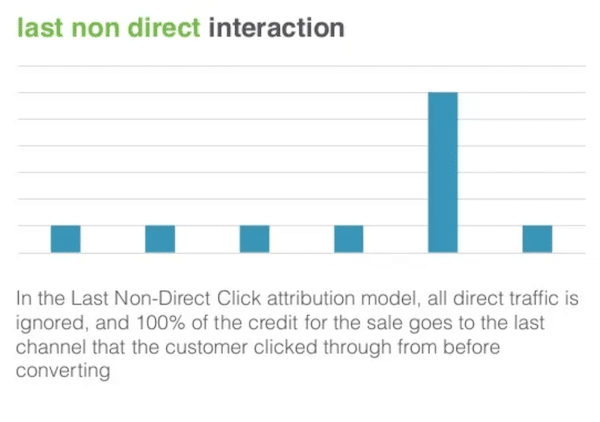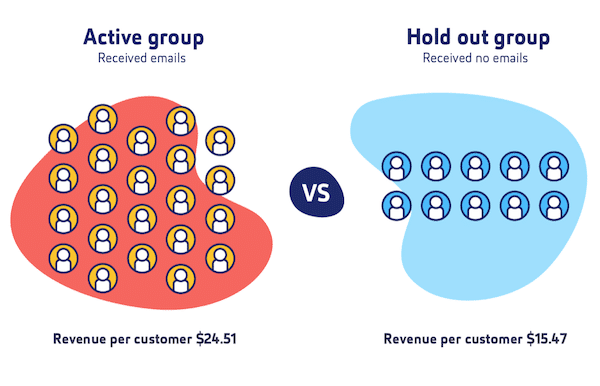Email marketing attribution involves gathering information to figure out if an email played a role in a transaction, such as a purchase, signing up for a service, or making a donation. Some attribution methods give credit to emails for a part of the transaction, while other methods split the credit among different channels. In some cases, an email might get all the credit or none at all.
There are various attribution methods, each with its pros and cons. When selecting an attribution method for your business, it’s crucial to understand that no method is flawless. The aim is to find a method that helps you identify the most successful channels for turning customers into buyers and the least successful ones. However, be cautious with the data you gather, recognizing that customer journeys are often complex and not easily explained.
The importance of email attribution
Knowing how to attribute emails is crucial, just like grasping the nuances of marketing trends, data, and analytics. This is because the more insights you gain from your ongoing marketing efforts, the more effectively you can refine them for future success.
For example, discovering through analysis that a specific paid advertising platform is barely contributing to revenue could lead to cost savings by eliminating it from your strategy. Likewise, identifying through attribution that certain email campaigns yield higher conversion rates than others could inspire you to replicate the successful strategies and discard the less effective ones. The more you understand, the more adept you become at engaging with your target audience.
The commonly used email attribution model examples
There are numerous email marketing attribution models available, each possessing its own set of advantages and disadvantages. The most effective method for selecting an attribution model for your business involves evaluating all your marketing channels and the optimal route to conversion, followed by reflecting on: “What insights do I seek from employing an attribution model?”
The insights you aim to gain from your marketing activities will guide your choice of attribution model. Below are 7 frequently used attribution models to think about:
i. Last Non-Direct Click Attribution – The first is Google Analytics’ standard method for tracking revenue and assigning credit for conversions. In simple terms, the credit for a conversion is attributed to the final step the customer makes, except for one key difference: this method does not credit conversions from direct traffic.

ii. Last Click Attribution – The last-click attribution approach simply assigns credit to the final website visited by the customer before making a purchase. This method is effective for monitoring the direct impact of your marketing content, but it’s important to remember that previous interactions may have also influenced the customer’s buying choice, even though this approach does not acknowledge the role of those earlier communications.
iii. First Click Attribution – The First Click Attribution Model stands in contrast to the Last Click Attribution Model. Rather than assigning all the credit to the final website visited before a conversion, this model allocates all the credit to the initial website the customer interacted with. This approach is useful for awarding credit to the channel that initially brought in the lead, but it’s important to remember that other channels may have also played a role in the conversion process.
iv. Control Groups – From a technical standpoint, Control Groups isn’t exactly an attribution model, but rather a way to evaluate and assess the effectiveness of your email marketing efforts for your business. The core question in email marketing attribution is: what contribution do your email campaigns make to your business’s revenue? The most effective method to address this question involves experimenting with various control groups.
For a specific duration, refrain from sending emails to a statistically significant, randomly selected segment of your customer base. Meanwhile, maintain your usual marketing email communications with the remainder of your customer base. Ultimately, compare the spending of those who received emails to those who did not. The gap between these two figures can serve as a metric to gauge the real-world impact of your email marketing strategies.

v. Position-Based Attribution – To ensure fairness and allocate credit in a way that reflects the contribution of each channel in the customer’s purchasing process, the Position-Based Attribution model assigns 40% of the credit to the initial and final engagements, while the remaining 20% is shared equally among the channels in the middle. This model is based on the belief that each channel a customer visits before making a purchase plays a role in their ultimate choice, with the first and last interactions being the most significant.
vi. Linear Attribution – The majority of attribution models tend to attribute the highest value to either the initial contact (the source of the lead) or the last contact (the last event before a purchase is made). However, the Linear Attribution model assigns equal value to all channels involved in the customer’s path to purchase. Although this model may not assist in identifying the most successful channels for customer conversion or lead generation, it can aid in identifying the channels that customers consistently interact with.
vi. Time Decay Attribution – The Time Decay Attribution model offers a different, proportional method for distributing points across channels that play a role in the conversion process. It prioritizes the most recent interaction leading up to the conversion, awarding the highest score to the last interaction and reducing the score for each subsequent interaction. If you prioritize the conversion event highly and aim to monitor which channels consistently have the most significant effect on conversion, the Time Decay Attribution model could be the solution for you.
vii. Custom Attribution – If you’ve spent years in your field and believe you’ve developed an intuition about which parts of a customer’s journey are most important for turning them into a buyer, you might consider building your own Attribution model. With this model, you assign more importance to the touchpoints you think are crucial and assign less importance to those you think are less significant. However, be cautious, as this approach might backfire because you’re essentially making guesses about which marketing channels are the most successful at converting customers, which is the primary reason for implementing an Attribution model in the first place.
Tools For Email Attribution
ESP – For beginners, the majority of top-tier email service providers (ESPs) offer a wide range of features to attribute sales to various email campaigns, provided you configure your ESP to monitor conversions. However, this won’t monitor your other marketing channels. Nonetheless, it’s a good beginning, and it offers valuable insights for assessing the success of your emails in converting subscribers. There are many ESPs to choose from.
Google Analytics – This is typically the first place marketers go to for their attribution model. Google Analytics (which is completely free, by the way) can monitor nearly every aspect of your website: how long visitors spend on each page, the typical number of pages viewed, the bounce rate, and obviously, the most frequent routes from one page to another. Below is an incredibly useful guide that shows you how to apply Google Analytics for your attribution model.
Google Analytics is not infallible, and you must understand its deficiencies. A primary concern is its lack of precision and dependability. GA depends on cookies and JavaScript, which might be blocked or removed by certain browsers, add-ons, or users. This could lead to missing or skewed information, particularly for visitors who return or make purchases. Additionally, Google Analytics fails to monitor crucial elements of your website, like how fast pages load, the user’s experience, or the quality of your content.
You should employ different instruments or strategies to assess and enhance these elements. A potential downside of using GA is its complexity or perplexity. It offers numerous functionalities and choices, which might complicate the process of identifying and understanding the relevant information.
Data Collection Software & Hub – To gather information for your selected attribution model and derive significant insights from this information, you’ll require data collection software that includes an easy-to-use dashboard. An instant online search shows there are numerous options available for monitoring and accumulating attribution data; the only requirement is to select a tool that aligns with your business and attribution model and is also affordable. Some options to think about are LeadsRX Attribution Software, Funnel, and Impravado.
Built-In – Many AI solutions (especially machine learning or deep learning ones) have highly sophisticated attribution facilities built in. Whether you trust your provider to measure their attribution is of course a matter for debate, but provided you know the parameters and have had their functionality demonstrated, they are by far most often the most accurate of all attribution systems there are.
Conclusion
To gather information for your selected attribution model and derive significant insights from this information, you’ll require data collection software that includes an easy-to-use dashboard. An instant online search shows there are numerous options available for monitoring and accumulating attribution data; the only requirement is to select a tool that aligns with your business and attribution model and is also affordable.
Companies aiming to identify the platforms that offer them fresh leads and support their top-of-the-funnel plans might choose to employ a first-touch approach. On the other hand, firms looking to find platforms that excel at converting leads into customers might prefer a last-touch approach. Whatever your preference it is essential to be able to validate your attribution, substantiate your methodology and also your choice of AI Email technology.





